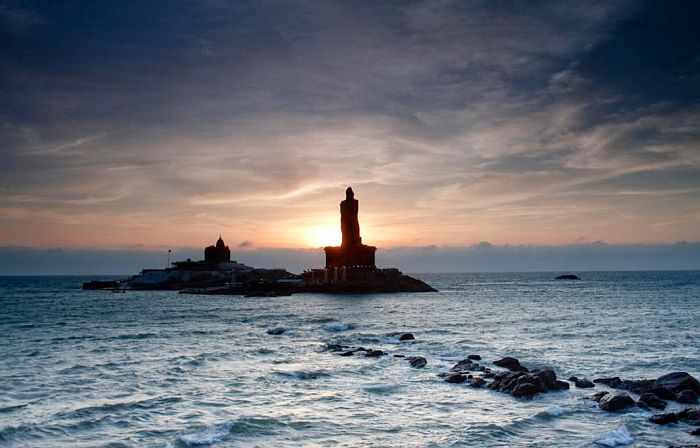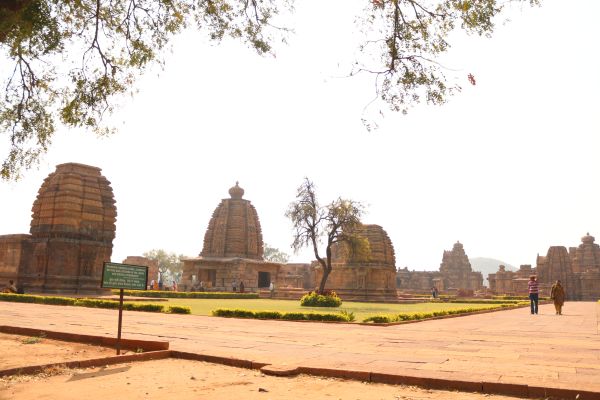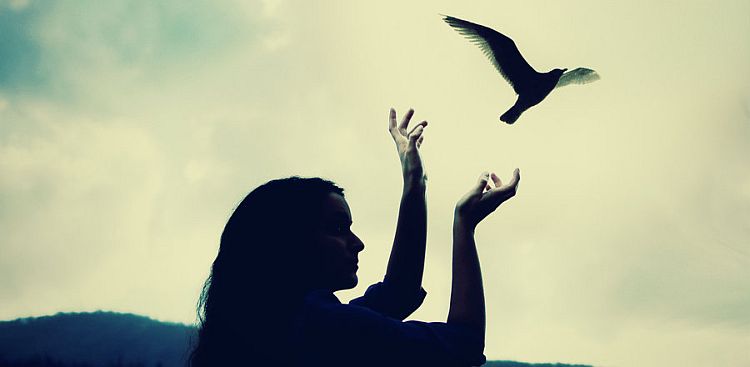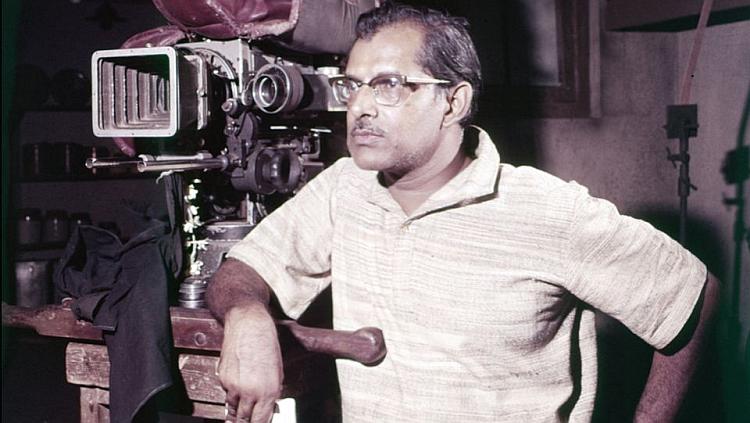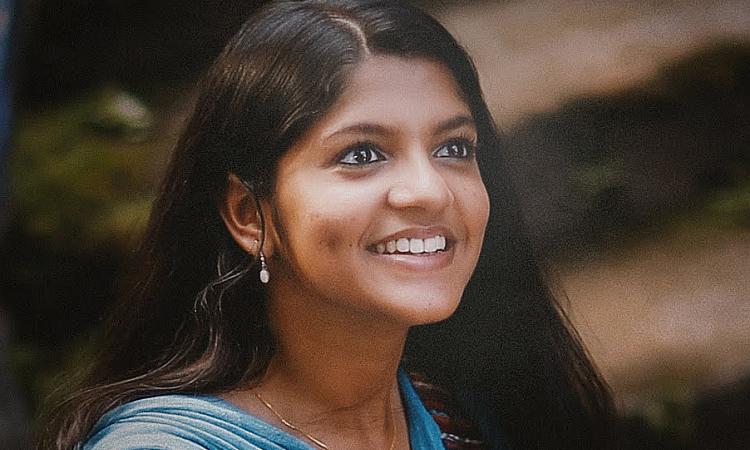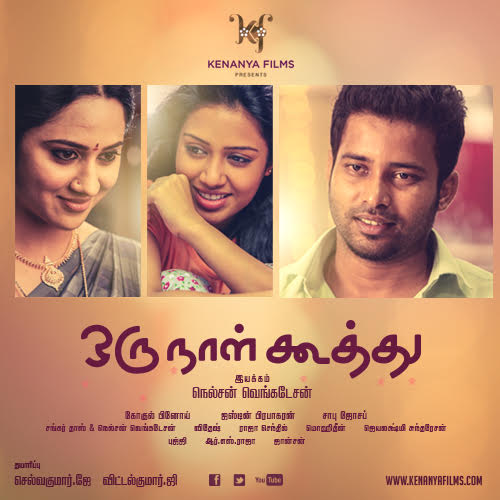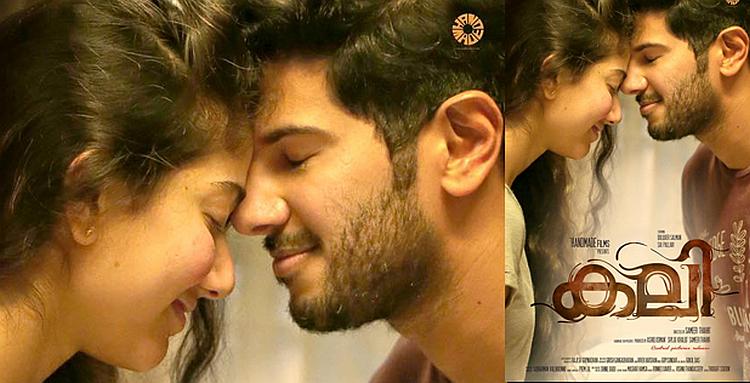The next day we checked the places to be visited in Badami. There were few locations that were near and far by - Banashankari Temple, Mahakuta, Pattadakal, Aihole. The Banashankari and Mahakuta temple were offway to Pattadakal, which was our priority. Pattadakal houses several temples in a single location whereas Aihole was the school of architecture where the prototypes of temples (that were built later time & several locations) were made. Since I always prefer the local public transport for commuting, we enquired about the bus service in the Badami bus stand. A conductor suggested to take the bus 738 for reaching Pattadakal. With my basic alphabet knowledge I read the bus board written in Kannada as "Koodala Sangama".

We got into the bus and the conductor said that this bus doesn't go to Pattadakal, but he suggested that he'll drop us in the near by stop called as "Sai Baba Mandir" and we can walk from there. The bus took almost an 45 minutes and visited all the villages that fall in the way. Atlast when the bus was nearing the Sai Baba temple, we could see the temples of Pattadakal complex in the distance. A fellow passenger suggested to continue travelling in the bus to Aihole, see those temples first and visit the Pattadakal temples while returning. But the bus we went was not going via Aihole, so that suggestion was scrapped.
We got down at the Sai Baba Mandi stop and from that location, the temple complex was about 1 km away. Aihole complex was 12 kms away. We started walking towards the Pattadakal complex.
Pattadakal Complex is a place for celebrating the victories and coronation for Chalukyas. There are many temples built to commensurate the victories and the occassions. Totally there are 10 temples and various small shrines in the same complex. Here I learnt about the styles of the "Gopuram". They are "Dravidan Style" which is typically South Indian consisting of multiple descending levels towards the height with a huge stone at the top, the next one being "Nagara Style" which is typically north Indian which consists of curvilinear structure and there is Rekhaprasada style which is a mix of these. So in this complex 4 temples are in Dravida style, 4 in Nagara style, 1 in Rekhaprasada style and one in Jain style.
http://onlinegalatta.com/index.php?option=com_content&view=article&id=645:badami-exploring-chalukyan-trails-part-2&catid=84:architecture&Itemid=229#sigProId72a33732df
The following are the temples in Pattadakal complex and I had taken the text from Wikipedia.
Virupaksha Temple
Virupaksha temple is the largest and grandest of all temples in Pattadakal built in 8th Century, built by Queen Lokamahadevi (Trilokyamahadevi)in 745 to commemorate her husband's victory (Vikramaditya II) over the Pallavas of Kanchi. The Virupaksha temple is rich in sculptures like those of Lingodbhava, Nataraja, Ravananugraha and Ugranarasimha. Virupaksha is the earliest dated temple with the sukanasika, being closely followed by the Mallikarjuna temple. The biggest temple in Pattadakal is Virupaksha, enclosed by a large prakara. According to an inscription, the temple was built by Lokamahadevi, the consort of Vikramaditya to commemorate his three victories over the Pallavas and occupation of Kanchi. Its original name was Lokeshvara or Lokapaleshvara. This was perhaps built in about first half of the 8th century. This temple has a sanctum, an inner passage, pillared navaranga and triple entrances from the north, east and the south porches. It has a massive gateway in front from the east and a small gate behind. There are inscriptions and imposing stone carved figures inside the stone mantapa. A little inside is the four-pillared Nandimantapa, which has a fine large stone bull. The sanctum has a circuit path and installed on the square pedestal, a black Shivalinga. The famous Kailasa temple at Ellora was built on the model of the Virupaksha temple here. The Kailasantha temple at Ellora was built based on the model of Virupaksha temple. The architect of the temple was given the title as Tribhuvanacharya.
Sangameshvara Temple
Sangameshwara Temple (was called Vijayewara) is oldest temple in Pattadakal, built by Chalukya King Vijayaditya Satyashraya ( 696-733), it has no sukanasika. The temple is in Dravidian style perhaps the oldest among the temples and it consists of a Sanctum, Inner passage and navaranga. The sanctum and inner passage are enclosed by a path way for pradakshina, which has several lattices of different design, sculptured on the outer walls various figures like Ugranarasimha and Nataraja. Both the Sangamesvara temple and the Virupaksha temple are similar to each other in being square on plan from the base to sikhara. The main vimana is of three storeys. The lowermost storey is surrounded by two walls. The second storey being an upward projection of the inner wall. While the outer wall encloses the covered circumambulatory round the sanctum. The navaranga has 20 pillars in four rows. Its exterior walls have stone carved figures. The sanctum has a Dravidian tower. According to an inscription in Kannada dated 1162, it was built by the Early Chalukya king Vijayaditya and was named Vijayeshvara.
Chandrashekhara temple
To the left of the Sangameshvara is the small Chandrashekhara temple. Its architectural style is very simple, without any idols or fragile carvings. This small shrine consists of sanctum with a Shivalinga and a small hall. Only one idol of doorkeeper remains now.
Mallikarjuna Temple
Mallikarjuna Temple is a smaller version of the Virupaksha temple and was built by Vikramadiyta's second queen Trilokyamahadevi in 745. This temple is also was constructed by Rani Trilokyamahadevi to celebrate the victory (by Vikramaditya II) over the Pallavas. The Mallikarjuna temple was built immediately after and close to the Virupaksha temple (It has a similar plan), with a 4 storeyed vimana with a circular griva and sikhara. Mallikarjuna temple in Dravidian style. To the north of the Virupaksha temple lies the Mallikarjuna which was formerly known as Trailokeshvara. It is in close proximity with the Sanghameshvara temple in design, construction and sculpture, but smaller in size. The porch has a beautiful image of Narasimha killing Hiranyakashipu and two female idols. Here are two grand images on both the sides of the entrance to the navaranga. The eighteen pillars of the navaranga have figures pertaining to Ramayana, Mahabharatha and those representing social conditions of those days. On the ceiling are beautiful figures of Gajalakshmi and Shiva-Parvathi with Nandi. On the external walls are sculptures like Shiva, Nandi, Lakulisha, Nataraja, etc. This temple was built by Trailokya Mahadevi, the queen of Vikramaditya II.'
Kashivisvanatha Temple
Kasivisvesvara temple was the last to be built in early Chalukya style. This temple was built by the Rashtrakutas in the 8th century. Kashi Vishwanatha temple in Nagara style To the north of the Mallikarjuna temple is the temple of Kashivishveshvara of which only the sanctum and a passage is left. On the pillars of the inner passage, female figures are engraved in high relief. On the ceiling, Somaskanda is represented. Its sanctum has a rekhanagara tower. The structure is presumably of the 8th century.
Galganatha temple
Galaganatha temple was built a century later in the architecture style of Rekha Nagara Prasada. Temple contains a sculpture of Lord Shiva killing the demon Andhakasura. Galaganatha Temple lies to the north of the Virupaksha and faces the west. It has a navaranga, shukanasa and the sanctum with a linga. Around the sanctum is the circuit path way. In several niches are small figures of Kubera, Gajalakshmi and others. On the external wall niche of the circuit path way is a fine figure of Shiva. The rekhanagara style tower over the temple is very fine. It seems to have been constructed during the first half of the 8th century.
Kadasiddhesvara and Jambulingeswara temples
Kadasiddhesvara and Jambulingeswara temples both attributed to 7th century. Kadasiddeshvara temple which has a sculpture of Shiva holding a Trident or Trishul in his hands and its twin temple, the Jambulinga Temple are all built in Nagara style and resemble the Hucchimalli' Guddi at Aihole.
Jambulinga temple
Behind the Galaganatha temple is the shrine of Jambulinga. It has a sanctum with a shukanasa and a navaranga. At the doorway of the shukanasa are idols of Shiva’s guards Nandi and Virabhadra. In the shrine is the linga. The outer wall niches of the sancyum have idols of Shiva (Lakulisha) and Vishnu. It has a small rekhanagara tower.
Kadasiddheshvara temple
To the north, Very close to the jambulinga shrine, is the shrine of Kadasiddheshvara. In size and architecture it is similar to that of Jambulinga. There are several well executed idols of Shiva, Parvathi and Vishnu and other divinities on the outer wall.
Jain Temple
Jain Narayana temple built by the Rashtrakuta dynasty at Pattadakal
Jain Temple located on the Pattadakal-Badami Road, is built in the Dravidian style by the Rashtrakutas of Manyakheta. It has some very beautiful sculptures & probably dates from the 9th century and was built by either King Amoghavarsha I or his son Krishna II. It consists of a mukhamantapa, a navaranga, shukanasa and garbhagriha. Its construction may be of the 9th century.
Papanatha temple at Pattadakal
Papanatha temple
Papanatha temple is built in the vesara style dated to 680. The temple was started in nagara style but later changed to a more balanced Dravidian style. Sculptures here speak of scenes from Ramayana and Mahabharatha. This temple has many similarities with the Navabrahma temples in Alampur, Andhra Pradesh, which were also built by Badami Chalukyas. Papanatha Temple is located to the south of the Virupaksha has a portico, main hall, big antechamber and the sanctum with encircled path way. At the doorway of the inner hall are idols of door-keepers, Nandi and Virabhadra. There are 16 pillars in the main hall, which have fine figures of couples and carved figures of females. The ceiling has impressive figures of Shiva-Parvathi with Vishnu and the gandharvas. To the north-west, on the wall is a notable figure of a royal court. Amorous couples and decorative carvings are found in several parts of the temple. On the external walls are figures of lion and elephant riders and Ramayana scenes. The temple appears to have built in stages. The sanctum has a rekhanagara tower. The temple appears to have built in 680.
In the photo album attached with this article, I would like to specially mention few sculptures. In the Sangameswara temple, there was this Bheeshma being laid on bed of arrows sculpture. Since Sangameshwara temple is about war and victory, this temple has lot of sculptures about war. In the ceiling panel we have a beautiful sculpture of Lord Sun with his 2 wives and other Gods. In one of the temple we had this Ravana trying to lift Mount Kailasa and in the other panel we had this Jatayu fighting with Ravana to stop kidnapping of Sita.

Once we are done with the temples, we wanted to return to room and take rest. We were waiting for bus near the temple itself. One of the shopkeeper advised us to walk towards the Pattadakal village bus stand where we can get bus / share vans for Badami. We walked to the Pattadakal bus stand and got into a share van. It was a typical village journey and had we waited for a couple of minutes more, we could have got into the bus itself which was literally vacant. After an hour of tortuous journey, we returned to room and slept for the remaining half of the day.
We started by 6:30 p.m from Badami in a share auto and reached the railway station by 6:45 p.m and got into the train by 7:45 p.m after a couple of delay announcements. Next morning we landed in Bangalore after experiencing the Chalukyan trails. Ofcourse we missed the Mahakuta, Banashankari temple and Aihole this time, but better luck next time.
This time it was hot even though we went in the right season. A photo of Bhoothanath temple with Agasthya lake filled and water levels upto the shrine was just haunting. So I am planning to visit Badami during rainy season to see its other facet. Let me see how it turns out...!!!





